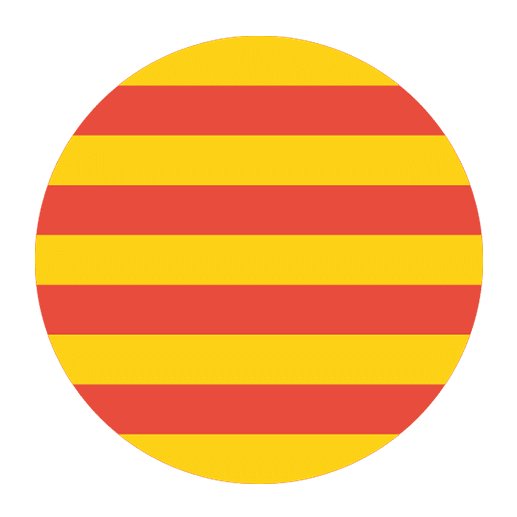Learning a new language can be a rewarding experience, opening doors to new cultures, opportunities, and personal growth. Among the many languages one might choose to learn, Catalan stands out for its rich history and vibrant contemporary usage, particularly in regions such as Catalonia, Valencia, and the Balearic Islands. As with any language, building a robust vocabulary is essential for effective communication. This article will explore effective techniques for building your Catalan vocabulary, ensuring you not only learn new words but also retain and use them effectively.
Immerse Yourself in Catalan Culture
One of the most effective ways to build your vocabulary is through immersion. Surround yourself with the Catalan language as much as possible. This can be done through various means:
1. Media Consumption
– **Watch TV Shows and Movies**: Platforms like Netflix and YouTube offer a variety of Catalan content. Watching shows and movies with subtitles can help you associate words with their meanings and contexts.
– **Listen to Music**: Catalan music spans various genres, from traditional folk to contemporary pop. Listening to Catalan songs can help you learn new vocabulary and pronunciation.
– **Read Books and Articles**: Start with children’s books or simple articles and gradually move to more complex texts. Reading helps you see words in context, which aids in retention.
2. Social Media and Online Communities
– **Follow Catalan Influencers**: Social media platforms like Instagram and Twitter have numerous Catalan influencers who post content in Catalan. Following them can provide daily exposure to the language.
– **Join Language Learning Communities**: Websites like Reddit or language exchange platforms like Tandem and HelloTalk can connect you with native Catalan speakers and other learners.
Use Technology to Your Advantage
In the age of technology, numerous tools and apps can aid in vocabulary building:
1. Language Learning Apps
– **Duolingo**: This popular app offers structured lessons in Catalan, helping you learn new words and phrases systematically.
– **Memrise**: Memrise uses spaced repetition and mnemonic techniques to help you remember vocabulary. It also offers user-generated content, which can include Catalan vocabulary lists.
– **Anki**: Anki is a flashcard app that uses spaced repetition to help you remember vocabulary. You can create your own decks or use pre-made Catalan decks.
2. Online Dictionaries and Translators
– **WordReference**: This online dictionary offers translations, definitions, and example sentences for Catalan words.
– **Google Translate**: While not always perfect, Google Translate can help with quick translations and pronunciation.
3. Language Exchange Platforms
– **Tandem**: This app connects you with native speakers who are learning your language, allowing for mutual language practice.
– **HelloTalk**: Similar to Tandem, HelloTalk connects you with native speakers for text, voice, and video exchanges.
Practice Regularly and Actively
Consistency and active engagement are key to building and retaining vocabulary. Here are some strategies to help you practice effectively:
1. Set Realistic Goals
– **Daily Vocabulary Targets**: Aim to learn a specific number of new words each day. Start with a manageable number, such as five words, and gradually increase as you become more comfortable.
– **Contextual Learning**: Try to learn words in context rather than in isolation. For example, if you’re learning the word “menjar” (to eat), learn related words like “esmorzar” (breakfast), “dinar” (lunch), and “sopar” (dinner).
2. Use Flashcards
– **Digital Flashcards**: Apps like Anki and Quizlet allow you to create digital flashcards and use spaced repetition to enhance memory retention.
– **Physical Flashcards**: Some learners prefer the tactile experience of physical flashcards. Write the Catalan word on one side and the English translation on the other.
3. Practice Speaking and Writing
– **Language Partners**: Practice speaking with language partners or tutors. Websites like iTalki can connect you with native Catalan speakers for one-on-one lessons.
– **Writing Exercises**: Keep a journal in Catalan. Start with simple sentences and gradually increase complexity. Writing helps reinforce vocabulary and grammar.
4. Label Your Environment
– **Sticky Notes**: Label objects in your home or workspace with their Catalan names. This constant exposure helps reinforce vocabulary.
– **Digital Labels**: Use apps that allow you to label digital images with words, creating a virtual flashcard experience.
Employ Mnemonic Devices and Memory Techniques
Mnemonic devices and memory techniques can significantly enhance your ability to remember new vocabulary:
1. Mnemonics
– **Association**: Create associations between the new Catalan word and an image, sound, or concept that is familiar to you. For example, to remember “gat” (cat), you might visualize a cat wearing a hat.
– **Acronyms and Sentences**: Form acronyms or sentences using the first letters of a list of new words. This can help you recall related vocabulary more easily.
2. Spaced Repetition
– **Spaced Repetition Systems (SRS)**: Use apps like Anki or Memrise that employ spaced repetition algorithms. These systems present words at increasing intervals, reinforcing memory over time.
3. Visualization and Imagination
– **Mental Imagery**: Visualize scenarios in which you use the new vocabulary. This technique helps create a mental context for the words, aiding in retention.
– **Storytelling**: Create stories or sentences using new words. The narrative context helps anchor the vocabulary in your memory.
Engage in Interactive and Fun Activities
Learning vocabulary doesn’t have to be a tedious task. Engaging in interactive and enjoyable activities can make the process more enjoyable and effective:
1. Language Games
– **Word Games**: Play word games like crosswords, word searches, or Scrabble in Catalan. These games make learning fun and challenging.
– **Language Apps**: Apps like Drops offer gamified language learning experiences, making vocabulary acquisition more engaging.
2. Cultural Activities
– **Cooking**: Follow Catalan recipes and learn the vocabulary related to cooking and food.
– **Travel**: If possible, travel to Catalan-speaking regions. Immersing yourself in the culture and language can provide a significant vocabulary boost.
3. Language Meetups and Events
– **Meetup Groups**: Join local or online Catalan language meetup groups. Practicing with others can improve your speaking skills and introduce you to new vocabulary.
– **Cultural Events**: Attend Catalan cultural events, such as festivals, concerts, or language workshops. These events provide opportunities to hear and use new words in context.
Review and Reflect on Your Progress
Regular review and reflection are crucial for consolidating your vocabulary and tracking your progress:
1. Regular Review Sessions
– **Scheduled Reviews**: Set aside specific times each week for reviewing previously learned vocabulary. This helps reinforce memory and identify any gaps.
– **Mixed Reviews**: Combine old and new vocabulary in your review sessions. This ensures you retain older words while learning new ones.
2. Self-Assessment
– **Quizzes and Tests**: Take regular quizzes and tests to assess your vocabulary knowledge. Many language learning apps offer built-in assessment tools.
– **Progress Tracking**: Keep a record of the words you’ve learned and review your progress regularly. This can be motivating and help you identify areas that need more attention.
3. Reflective Practice
– **Language Journal**: Maintain a language journal where you reflect on your learning experiences, challenges, and achievements. Writing about your journey can provide insights and keep you motivated.
– **Feedback**: Seek feedback from language partners, tutors, or teachers. Constructive feedback can help you improve and stay on track.
Customize Your Learning Approach
Everyone learns differently, so it’s important to customize your vocabulary-building approach to suit your individual preferences and strengths:
1. Identify Your Learning Style
– **Visual Learners**: Use visual aids like flashcards, images, and charts to learn new words.
– **Auditory Learners**: Focus on listening activities, such as podcasts, music, and language exchange conversations.
– **Kinesthetic Learners**: Engage in hands-on activities, such as role-playing, cooking, or labeling objects, to reinforce vocabulary.
2. Adapt Techniques to Your Needs
– **Personal Interests**: Tailor your vocabulary learning to your interests. If you enjoy sports, focus on sports-related vocabulary. If you love cooking, learn culinary terms.
– **Learning Pace**: Adjust the pace of your learning based on your comfort level. Some learners may prefer a slower, more in-depth approach, while others may thrive on rapid vocabulary acquisition.
3. Combine Multiple Techniques
– **Integrated Approach**: Combine various techniques and activities to create a well-rounded learning experience. For example, use flashcards for initial learning, watch videos for context, and practice speaking with language partners.
– **Experiment and Adjust**: Experiment with different methods and adjust your approach based on what works best for you. Flexibility and adaptability are key to successful language learning.
Conclusion
Building a strong vocabulary in Catalan requires dedication, consistency, and a variety of effective techniques. By immersing yourself in the language, leveraging technology, practicing regularly, employing mnemonic devices, engaging in interactive activities, reviewing your progress, and customizing your learning approach, you can make significant strides in your vocabulary acquisition. Remember, language learning is a journey, and every new word you learn brings you closer to fluency and a deeper understanding of Catalan culture. Happy learning!

